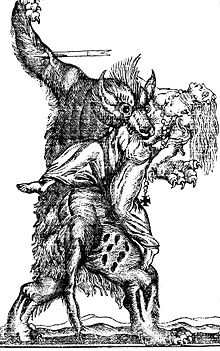History
Werewolf

The legend of the werewolf is centuries old, having first appeared as we have come to know it in the countryside of European towns in the 1500's. In theory, a werewolf is a mortal that has the magical ability to transform into a large gruesome wolf. It can only be killed by a silver bullet, or other silver object, through its heart and will revert to human form then. This transformation is also known as shape shifting, and shape shifting can be traced back to Ancient Greek and Roman mythology. From the legends of the Zeus Lycaeus to writings of Plato, Pliny and Ovid, metamorphosis from man to beast seemed to be common.
Kin to the werewolf are other were animals and half man / half beast creatures. The most widely known of these are Centaurs and Satyrs, from Ancient Greece. Other countries have other were animals including: India's were tigers, Africa's were leopard, Russia's were bear, South America's were snake and China's were foxes. Other cultures also have were hyenas, were lions, were jackals and were crocodiles. The fascination with half man/ half beast creatures and men that can change into an animal, are found all over the world.
The werewolf legend grew strong in the late 1500's in Europe mainly because the wolf's presence was very strong in the countryside at that time. The people's fear of these creatures was so strong and so real that it may have contributed to many of the werewolf legends. The wolf, in it's natural form, has been noted to possess demonic qualities: semi nocturnal, gray in color, high pitched howls, razor sharp teeth, eyes that glow yellow, green or red and a tendency to be quiet and not seen in the hunt and while foraging. This haunting and frightening image of a wolf combined with the fear and the ranting of many, led people to believe that attacks on their village were due to werewolves.